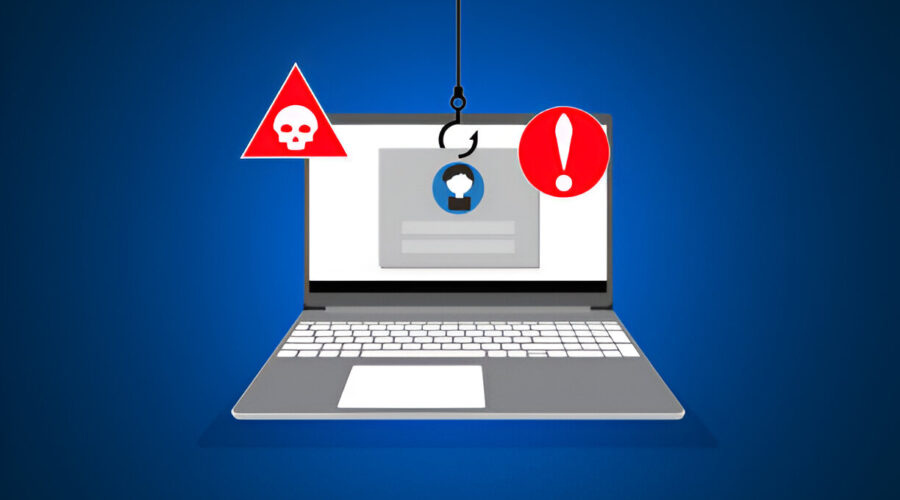Data Breaches: How to Respond to Security Incidents
Data breaches have become an unfortunate reality in today’s digital landscape. From financial institutions to healthcare providers, no industry is immune to the threat of cyberattacks. When a breach occurs, the way a company responds is critical to minimizing damage, protecting sensitive information, and maintaining trust. A prompt and organized response can turn a security crisis into a manageable situation.
Here’s a guide on how to effectively respond to data breaches and security incidents.
1. Identify and Contain the Breach

The first step in responding to a data breach is to identify the scope of the incident. This involves determining how the breach occurred, which systems were compromised, and what data was affected. The goal is to contain the breach as quickly as possible to prevent further damage.
Key Steps:
- Activate the incident response team: Ensure that your designated team of IT, security, and legal professionals is prepared to respond.
- Secure compromised systems: Isolate affected networks, servers, or devices to stop the attacker from accessing more data.
- Preserve evidence: While containing the breach, make sure to preserve logs, data, and any other evidence that can help with the investigation.
By promptly containing the breach, you limit the scope of the damage and prevent the attacker from continuing to exploit vulnerabilities.
2. Assess the Impact

Once the breach is contained, assess its impact by understanding the extent of data exposure and its potential consequences. Ask the following questions:
- What type of data was compromised? Sensitive information such as credit card numbers, personal identification details, or health records requires more immediate action than non-sensitive data.
- How many individuals or organizations are affected? The number of affected parties will influence your next steps, including how you communicate and manage the breach.
The severity of the breach will dictate the urgency of your response and determine the level of resources you need to dedicate to the recovery process.
3. Notify Stakeholders and Regulatory Authorities
Data breaches can have legal and reputational consequences, making timely notification a critical part of the response process. Depending on your industry and location, you may be legally required to notify affected individuals, regulatory authorities, and business partners.
Notify in compliance with regulations:
- GDPR (General Data Protection Regulation): For companies operating in the EU, GDPR mandates that data breaches affecting personal information must be reported within 72 hours.
- CCPA (California Consumer Privacy Act): Organizations serving California residents may be required to notify individuals when their personal data is compromised.
Notify key stakeholders:
- Customers: Inform affected customers about the breach, providing details about what data was compromised and how it might affect them. Offer guidance on how they can protect themselves, such as changing passwords or monitoring their accounts for suspicious activity.
- Partners and vendors: If third-party vendors or partners were affected, notify them so they can take appropriate measures to protect their own systems and data.
- Internal teams and employees: Make sure that internal staff are aware of the breach and provide them with instructions on how to respond, particularly if employee data was exposed.
Transparency during a breach helps maintain trust and enables affected parties to take immediate steps to mitigate the risk of further damage.
4. Investigate the Root Cause
After containment and notification, the next step is a thorough investigation into how the breach occurred. Understanding the root cause will allow your team to prevent similar incidents from happening in the future.
Key actions:
- Conduct a forensic analysis: Engage your IT security team or hire external experts to analyze the compromised systems. Identify any vulnerabilities or misconfigurations that allowed the breach to occur.
- Review security logs: Look for indicators of compromise (IoCs), such as unusual traffic patterns, unauthorized logins, or malware traces that could have led to the breach.
- Interview staff and review processes: Sometimes human error, such as clicking on a phishing email or failing to update software, can be the root cause of a breach. Ensure all angles are covered in your investigation.
The investigation’s findings will inform the necessary steps to strengthen your cybersecurity defenses and prevent future breaches.
5. Mitigate Damage and Restore Operations
Once the investigation identifies the vulnerabilities that led to the breach, your team can focus on mitigating the damage. This may involve a combination of technical and operational changes to enhance security.
Mitigation strategies:
- Patch vulnerabilities: If the breach resulted from outdated software or unpatched systems, immediately install the necessary security updates.
- Strengthen access controls: Review and improve access controls, such as enforcing multi-factor authentication (MFA) and tightening user permissions.
- Remove malware: If malicious software was involved in the breach, ensure it is completely removed from all affected systems.
- Review backups: Restore any compromised data from secure backups if necessary, and verify that backups are protected from similar attacks.
In addition to these technical fixes, it’s important to review and update your internal security policies, train staff on best practices, and implement stronger monitoring tools to detect future breaches.
6. Offer Support to Affected Parties
Data breaches can have significant financial and emotional impacts on the people whose information has been compromised. Offering support to affected parties demonstrates accountability and commitment to resolving the situation.
Here’s how to provide support:
- Credit monitoring services: For breaches involving personal or financial information, offering free credit monitoring or identity theft protection can help victims track any suspicious activity related to their data.
- Clear instructions for action: Provide clear guidance on steps affected parties can take to protect themselves, such as changing passwords, enabling two-factor authentication, or freezing credit reports.
- Dedicated support line: Set up a hotline or email address where affected individuals can ask questions or seek assistance related to the breach.
Taking proactive steps to assist those affected by the breach can help rebuild trust and mitigate reputational damage.
7. Review and Improve Security Policies

The aftermath of a breach is an ideal time to review and strengthen your security posture. Use the lessons learned from the incident to build more robust security measures that can prevent future attacks.
Key areas to review:
- Incident response plan: If your response plan had gaps or delays, update it to include more streamlined processes for containing breaches and notifying stakeholders.
- Employee training: Cybersecurity awareness should be a priority. Ensure that employees receive regular training on topics like phishing attacks, password management, and data protection.
- Security technologies: Implement advanced security tools, such as firewalls, intrusion detection systems (IDS), encryption, and endpoint security solutions, to monitor and protect sensitive data.
Continuously improving your cybersecurity defenses not only protects your business but also helps you remain compliant with regulations and industry standards.
8. Communicate the Steps Taken Publicly
After addressing the breach and securing affected systems, it’s important to reassure customers, partners, and the public that the issue has been resolved and steps have been taken to prevent future incidents.
How to communicate effectively:
- Issue a public statement: Explain the situation, what caused the breach, and how you resolved it. Be transparent about the steps taken to prevent future breaches.
- Highlight improvements: Mention any security upgrades or policy changes that have been implemented since the breach. This shows that you are actively improving your security to protect stakeholders in the future.
- Avoid blaming: Focus on solutions and responsibility rather than pointing fingers at external parties or employees. Accountability is key to maintaining trust.
Effective communication post-breach can help salvage your reputation and reassure stakeholders that your organization is committed to improving security.
Conclusion
Data breaches are serious incidents that can disrupt business operations, compromise sensitive information, and damage reputations. A prompt, organized, and transparent response can help minimize the damage and restore trust with stakeholders. By containing the breach, communicating with affected parties, investigating the cause, and implementing stronger security measures, businesses can emerge from a data breach more resilient and better prepared for the future.






